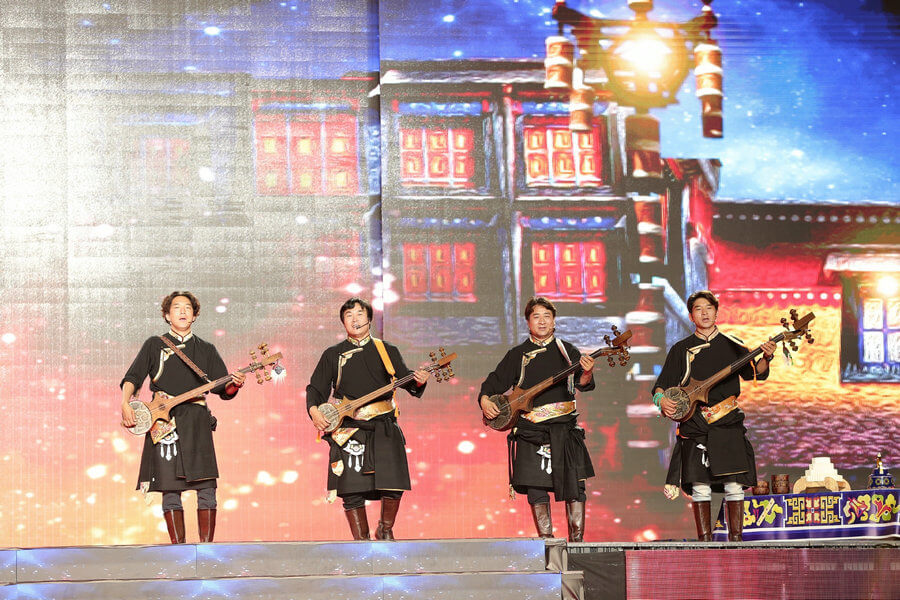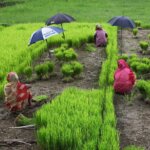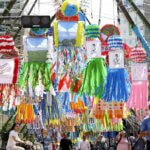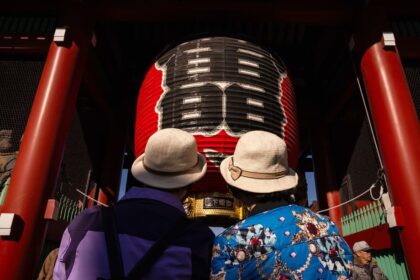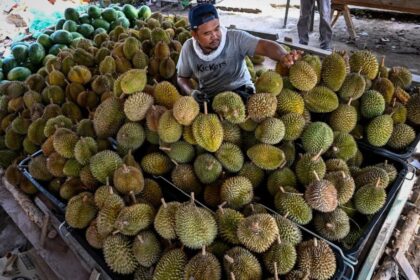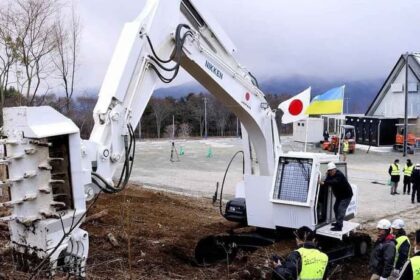The 2025 China Original Folk Song Festival Opens in Hohhot
The 2025 China Original Folk Song Festival, a major event organized by the Ministry of Culture and Tourism, officially opened on July 3 in Hohhot, the capital of the Inner Mongolia Autonomous Region. Set against the sweeping backdrop of the Chilechuan grasslands—a scenic and culturally significant site—the festival began with the enchanting sounds of pastoral songs, immediately immersing attendees in the region’s rich musical traditions. This year’s festival marks a significant moment for Chinese folk music, drawing together artists, cultural heritage, and a growing international audience.
- The 2025 China Original Folk Song Festival Opens in Hohhot
- What Makes the Festival Unique?
- Inner Mongolia: A Cradle of Folk Music
- Folk Song Festival in the Context of Regional Tourism and Cultural Revival
- Preserving Intangible Cultural Heritage
- Comparisons with Other Grassland Festivals
- Notable Performers and the Evolution of Chinese Folk Music
- The Broader Significance: Music as Cultural Diplomacy
- In Summary
What Makes the Festival Unique?
The China Original Folk Song Festival is not just a concert series; it is a biennial celebration of the country’s diverse musical heritage. First introduced in 2019, the festival has quickly become a cornerstone for the preservation and promotion of indigenous Chinese folk music. In 2025, the event features 65 participating groups and nearly 400 performers from across China, representing a wide array of ethnicities and musical styles. The performances span 42 national-level intangible cultural heritage items and 23 provincial-level heritage projects, making the festival a living museum of China’s folk traditions.
At the heart of the festival is a commitment to authenticity. Performers convey their love for life and homeland through vocals and traditional instruments, captivating audiences with choral performances and solo acts that highlight the distinctive charm of folk songs from various regions. The festival’s opening ceremony, held on the Chilechuan grassland, set a harmonious tone, with the natural landscape amplifying the music’s pastoral beauty.
Inner Mongolia: A Cradle of Folk Music
Hohhot and the surrounding grasslands of Inner Mongolia have long been recognized as a cradle of Chinese folk music. The region’s musical legacy is deeply intertwined with its nomadic history, vast landscapes, and multi-ethnic communities. Traditional Mongolian music, for example, is characterized by the use of the morin khuur (horse-head fiddle), khoomei (throat singing), and urtyn duu (long song), all of which evoke the spirit of the grasslands and the resilience of its people.
Modern bands like Anda Union, formed in Hohhot, have brought this music to international audiences, performing in cities across the UK, US, and beyond. Their mission is to rediscover and reinterpret old songs, ensuring that the stories and melodies of the grasslands are not lost to time. As Nars, the band’s lead musician, explains, “We all grew up with legends of Genghis Khan, Mongol tribespeople and many other folk tales about love, brotherhood and courage. They are our wealth.”
This blend of tradition and innovation is also seen in contemporary acts like Nine Treasures, a folk metal band that fuses Mongolian instruments with modern rock, demonstrating the adaptability and enduring appeal of Inner Mongolian music.
Folk Song Festival in the Context of Regional Tourism and Cultural Revival
The 2025 festival is part of a broader campaign to position Inner Mongolia as a premier destination for cultural and eco-tourism. The region’s spring tourism campaign, titled “Musical Tours in Inner Mongolia,” features 219 cultural and tourism events under six thematic categories. These include open-air concerts, heritage craft workshops, and immersive experiences that invite visitors to participate in local traditions such as horsehead fiddle-making and Mongolian embroidery.
By integrating music, heritage, and nature, Inner Mongolia’s tourism strategy aims to transform passive sightseeing into active cultural storytelling. Tourists are encouraged to engage with millennia-old traditions, from participating in wool shearing with herders in Hulunbuir to attending live-action dramas that dramatize ancestral rituals on the banks of the Yellow River. The region’s natural beauty—highlighted by springtime blossoms, alpine valleys, and unpolluted night skies—serves as both a backdrop and an inspiration for these cultural events.
This holistic approach reflects a national trend in China to promote intangible cultural heritage as a driver of tourism and community engagement. The folk song festival, with its emphasis on authenticity and participation, exemplifies this strategy, offering both locals and visitors a chance to connect with the living traditions of the grasslands.
Preserving Intangible Cultural Heritage
China’s commitment to preserving intangible cultural heritage is evident in the scale and scope of the festival. Many of the performances featured at the event are recognized as national or provincial heritage items, protected under government initiatives that aim to safeguard traditional arts for future generations. This includes not only music but also dance, crafts, and storytelling traditions that are integral to the identity of various ethnic groups.
The importance of such efforts is underscored by the inclusion of the Chinese Spring Festival on UNESCO’s Representative List of the Intangible Cultural Heritage of Humanity. As with the Spring Festival, the folk song festival serves as a platform for the transmission of values such as harmony, prosperity, and renewal—values that resonate across cultures and generations.
Experts and cultural leaders emphasize the role of festivals in fostering social cohesion and pride in heritage. As Ljiljana Stevic, director of the Confucius Institute at the University of Banja Luka, notes, “The festival is celebrated with diverse customs, including the preparation of traditional dishes, the hanging of red lanterns, and vibrant performances featuring lion and dragon dances. These practices, deeply rooted in history, reflect the values of harmony, prosperity and renewal.”
Comparisons with Other Grassland Festivals
Inner Mongolia is home to several major festivals that celebrate its nomadic culture and artistic heritage. The Naadam Festival, for example, is a five-day event featuring horse racing, wrestling, and archery—known as the “three games of men.” Like the folk song festival, Naadam is inscribed on UNESCO’s list of intangible cultural heritage and serves as a spiritual feast for the region’s residents.
While Naadam emphasizes athletic prowess and ancient military arts, the folk song festival focuses on musical expression and the preservation of oral traditions. Both festivals, however, share a common goal: to celebrate the resilience and creativity of the grassland peoples, and to pass on their stories to new generations.
Notable Performers and the Evolution of Chinese Folk Music
The festival attracts a diverse array of performers, from established stars to emerging talents. One notable figure is Wei Wei, a renowned singer of Zhuang nationality who was born in Hohhot. Her deep, sonorous voice and unique interpretations of traditional songs have made her a beloved figure in Chinese music. Wei Wei’s career, which includes performances at major international events like the Atlanta Olympic Games, exemplifies the global reach of Chinese folk music.
Contemporary artists continue to innovate within the genre, blending traditional instruments with modern styles. Bands like Nine Treasures and Liberation have introduced elements of metal and rock, while still drawing on the melodies and themes of Mongolian folk music. This evolution ensures that folk traditions remain relevant and accessible to younger audiences, both in China and abroad.
The Broader Significance: Music as Cultural Diplomacy
The China Original Folk Song Festival is more than a celebration of music; it is a form of cultural diplomacy. By showcasing the diversity and vitality of Chinese folk traditions, the festival fosters mutual understanding and respect among different ethnic groups and between China and the world. International collaborations, tours, and media coverage help to position Inner Mongolia—and China more broadly—as a center of cultural innovation and exchange.
As the world becomes increasingly interconnected, the preservation and promotion of intangible cultural heritage take on new importance. Festivals like the one in Hohhot serve as reminders of the power of music to bridge divides, inspire creativity, and sustain communities through times of change.
In Summary
- The 2025 China Original Folk Song Festival opened on July 3 in Hohhot, Inner Mongolia, celebrating the country’s diverse musical heritage.
- The festival features 65 groups and nearly 400 performers, representing 42 national-level and 23 provincial-level intangible cultural heritage items.
- Set on the Chilechuan grasslands, the event highlights the region’s deep musical traditions and its role as a cradle of Chinese folk music.
- The festival is part of a broader campaign to promote cultural and eco-tourism in Inner Mongolia, integrating music, heritage, and nature.
- Efforts to preserve intangible cultural heritage are central to the festival, with performances recognized at both national and international levels.
- Notable performers like Wei Wei and innovative bands like Anda Union and Nine Treasures demonstrate the evolution and global reach of Chinese folk music.
- The festival serves as a platform for cultural diplomacy, fostering understanding and pride in China’s rich artistic traditions.


